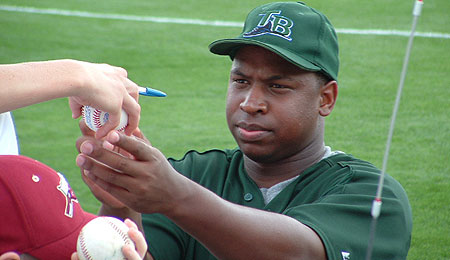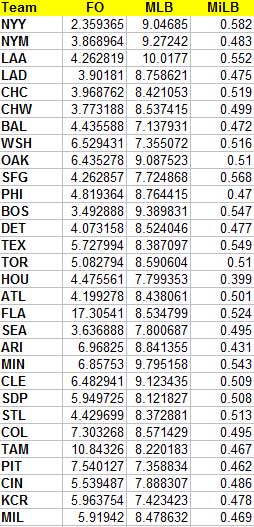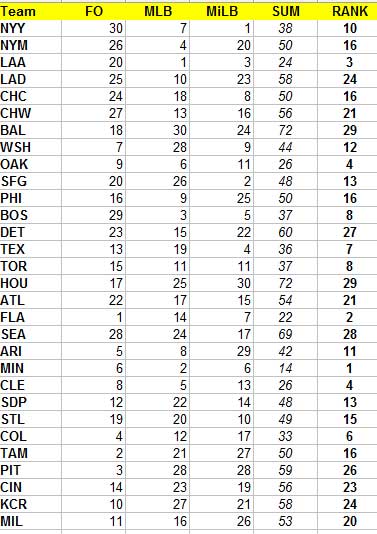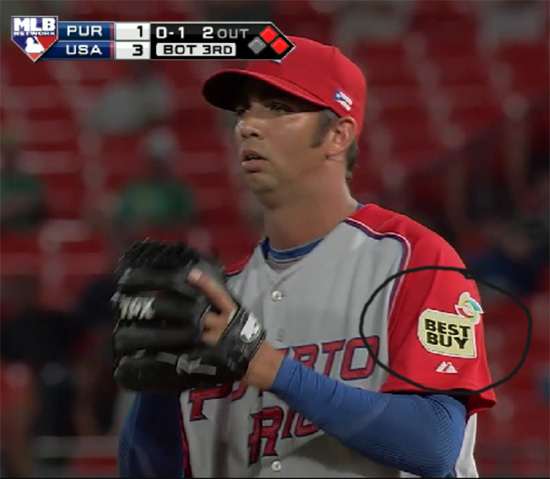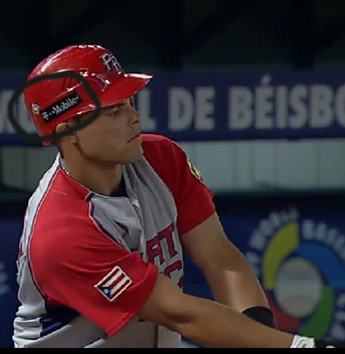Three weeks of spring training are in the books and this is how the Twins' players involved in position battles are performing so far. These are the cummulative statistics through week 3 (The rankings are by decreasing OPS for position players and by decreasing WHIP for pitchers) :
Position Players:Outfield Starter Battle:Gomez .333/.400/.815, 3 HR, 3 BB, 2 SB (27 AB)
Young .423/.464/.615, 1 HR, 1 SB (26 AB)
Cuddyer .280/.308/.560, 1 HR, 1 BB (25 AB)
Span .097/.200/.097, 4 BB, 1 SB (31 AB)
Spot on the Bench vs Rochester Battle:Buscher .391/.444/.609, 1 HR, 3 BB (23 AB)
Hughes .444/.444/.444 (9 AB)
Ramos .308/.400/.385, 2 BB (13 AB)
Butera .286/.375/.286, 1 BB (7 AB)
Machado .200/.273/.300, 2 SB, 1 BB (10 AB)
Macri .211/.250/.263 1 BB (19 AB)
Morales .250/.222/.250 (8 AB)
Tolbert .138/.219/.138 2 BB (29 AB)
Plouffe .071./.133/.071, 1 BB, 1 SB (14 AB)
Tolleson .000/.000/.000 (10 AB)
Battle for Rochester vs. New Britain:Peterson .313/.389/.625 1 HR (GS), 2BB (16 AB)
Martin .444/.421/.556 (18 AB)
Winfree .350/.333/.500 (20 AB)
Valencia .385/.385/.385 (13 AB)
Other notable starter stats:Kubel .381/.458/.571 1 HR, 3 BB (21 AB)
Casilla .393/.433/.500, 2 BB, 1 SB (28 AB)
Morneau .333/.385/.500 1 BB (12 AB)
Harris .273/.360/.318, 2 BB (22 AB)
Position Player of weeks 1-3:Carlos Gomez
Honorable mention:, Delmon Young, Jason Kubel, Dustin Martin, Brian Buscher, Alexi Casilla, Brock Peterson.
Pitchers:Starter Performance: Blackburn ERA 0.00, WHIP 0.40, 0 BB, 1 K, 5 IP
Slowey ERA 1.93, WHIP 0.75, 1 BB, 10 K 9.1 IP
Liriano ERA 2.19, WHIP 0.89, 2 BB, 12 K, 12.1 IP
Perkins ERA 3.00, WHIP 1.33, 4 BB, 6 K, 15 IP
Baker ERA 6.00, WHIP 1.80, 0 BB, 4 K, 6 IP
Battle for set up man:Crain 0.00 ERA, WHIP 0.27, 0 BB, 2 K, 3.2 IP (plus 1.1 perfect innings with 4 K for team Canada in the WBC)
Ayala 0.00 ERA, WHIP 0.50, 0 BB, 0 K, 2 IP; WBC with Mexico
Breslow 1.50 ERA, WHIP 0.50, 1 BB, 8 K, 6 IP
Guerrier 4.05 ERA, WHIP 1.65, 4 BB, 3 K, 6.2 IP
On the bubble; battle for the last 1-2 spots:Henn 0.00 ERA, WHIP 1.00, 2 BB, 2 K, 4 IP
Keppel 3.60, WHIP 1.00, 1 BB, 2 K, 5 IP
Jones 1.29 ERA, WHIP 1.29, 3 BB, 5 K, 7 IP
Dickey 4.70 ERA, WHIP 1.30, 2 BB, 9 K, 7.2 IP
Humber 9.00, WHIP 1.50, 0 BB, 0 K, 4 IP
Goslin 0.00 ERA, WHIP 1.91, 3 BB, 2 K, 3.2 IP
Mijares 10.38 ERA, WHIP 3.00, 7 BB, 4 K, 4.1 IP
pitcher of weeks 1-3, spring training:Jesse Crain 
honorable mention: Kevin Slowey, Nick Blackburn, Fransisco Liriano, Craig Breslow, Jason Jones

